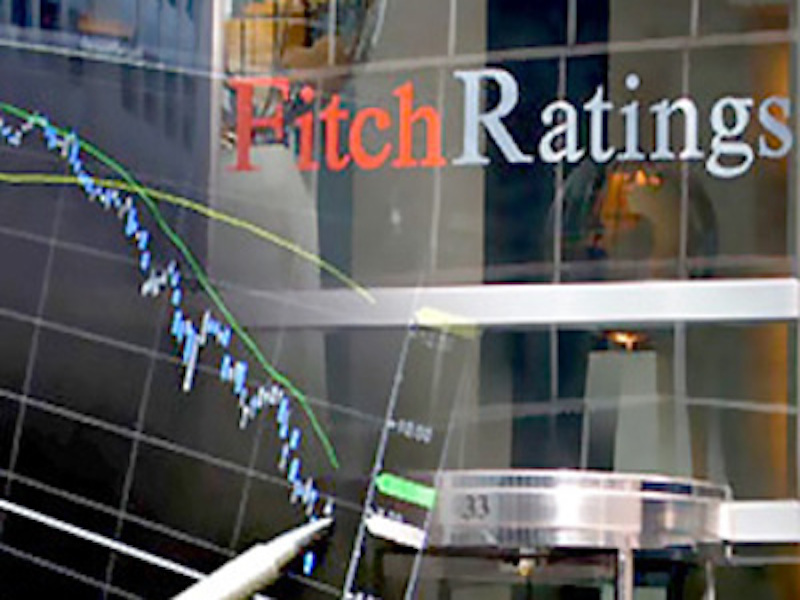Global bank rating trends were sharply negative in the first half of 2017 with downgrades significantly outnumbering upgrades, says Fitch Ratings, just as it revises up its 2017 and 2018 world GDP growth forecasts to 3.0 percent (from 2.9% in June) and 3.2 percent (from 3.1%), respectively.
“We changed 92 bank Issuer Default Ratings (IDRs), making the half year 2017 the most volatile six-month period in recent years. There were 71 downgrades and 21 upgrades, with more than half of the downgrades related to our reassessment of sovereign credit strength,” the global rating agency said.
Emerging markets (EMs) dominated the IDR changes with 57 downgrades and eight upgrades, compared with 14 downgrades and 13 upgrades in developed markets (DMs).
“Notably, we downgraded 36 IDRs in the Middle East and Africa and 11 IDRs in EM Americas, while all eight upgrades were in EM Europe.”
However, the global distribution of outlooks remains skewed, with 13 percent of IDRs on negative outlook/watch and only five positive.
In EMs, the share of negative outlooks (18%) decreased in 1H17 as outlooks stabilised in Turkey, Saudi Arabia, Costa Rica and South Africa (following downgrades), and in Colombia and Panama. At end-1H17, 80 percent of negative outlooks/watches came from the Middle East and Africa and Latin America, in particular, Brazil (14), Qatar (nine) and Mexico (seven). Only two percent of EM banks were on positive outlook.
In developed markets (DMs), positive outlooks at end-1H17 (8%) slightly outweighed negative outlooks (7%). This was mainly due to outlook revisions on six Japanese and six Italian banks to stable from negative.
In all cases except for one in Italy, the revisions mirrored sovereign rating actions.
Positive Outlooks are concentrated in Europe, particularly in Spain where they reflect banks’ improving asset quality supported by economic recovery.
On global GDP, Fitch said that recent flow of good news on the world economy has continued since its June Global Economic Outlook (GEO). It, therefore, revised up its 2017 and 2018 world GDP growth forecasts to 3.0
percent (from 2.9% in June) and 3.2 percent (from 3.1%), respectively.
“The revisions are led by emerging markets and China in particular, whose recovery has been more pronounced than anticipated. But data continue to suggest a synchronised global expansion across both advanced and emerging market economies.
Spillovers from the rebound in emerging market demand are reflected in the fastest growth in world trade since 2010,” said Brian Coulton, Fitch’s chief economist.
Real Chinese GDP grew by 6.9 percent year-on-year in 2Q17 (above the 6.7% estimate in the June GEO) and nominal GDP growth has risen to over 11 percent year-on-year this year, up from a low of 6.4 percent in 4Q15.
“The recent slowdown in Chinese credit growth is likely to weigh on housing demand in 2018 but housing starts have been holding up well.
“Moreover, export demand has shown a clear improvement this year. While we still expect a slowdown, our 2017 and 2018 GDP growth forecasts have been revised up by 0.2pp to 6.7 percent and 0.4pp to 6.3 percent, respectively,” said Coulton.
“US GDP grew by 0.6 percent (non-annualised) in 2Q17, in line with the June GEO, but this was still a big improvement on 1Q17 (0.3%). The recovery in business investment growth continues and survey indicators point to further gains ahead. Fiscal easing is still expected to provide a modest boost to growth next year and export demand is picking up. The Fed appears confident in sticking with its normalisation path despite a recent dip in inflation readings and they are likely to commence partial reinvestment of maturing bond holdings in the next few months. We continue to expect a further Fed rate hike by the end of this year,” he further explained.
In the euro zone, growth picked up to 0.6% in 2Q17 (exceeding the 0.5% estimate in the June GEO) with positive surprises in both France and Spain.
“A further easing in the ECB’s survey of bank credit standards in 2Q17 underscores the impact of monetary policy support, while export demand has also improved this year. Ongoing sharp declines in unemployment are boosting consumer confidence and confirm that growth is currently well above trend. It is in this context that market expectations of ECB tapering in 2018 have firmed up, supporting the euro,” said Coulton.
Reporting further, the report states: “The slowdown in the UK since late 2016 was confirmed with the 2Q17 GDP release, revealing that growth remained subdued at 0.3 percent. Declining real incomes and a household saving ratio that is already at a 50 year low suggest that consumer spending will slow further. Brexit uncertainties will weigh heavily on investment this year and next.
“Japan’s economy has continued to show signs of domestic and external strength with consumer spending supported by a tight labour market and corporate loans growing at their fastest pace for a decade. Our 2017 growth forecast has been upgraded by 0.1pps to 1.3 percent,” it noted.


